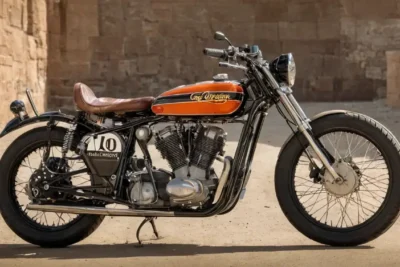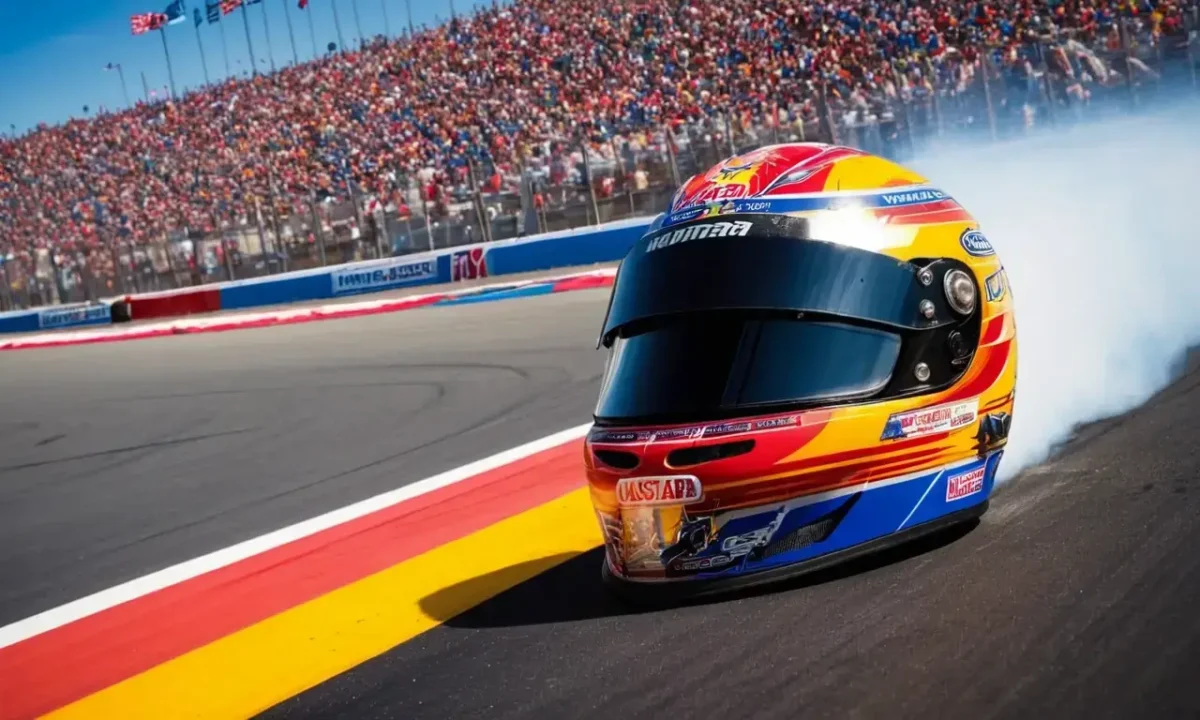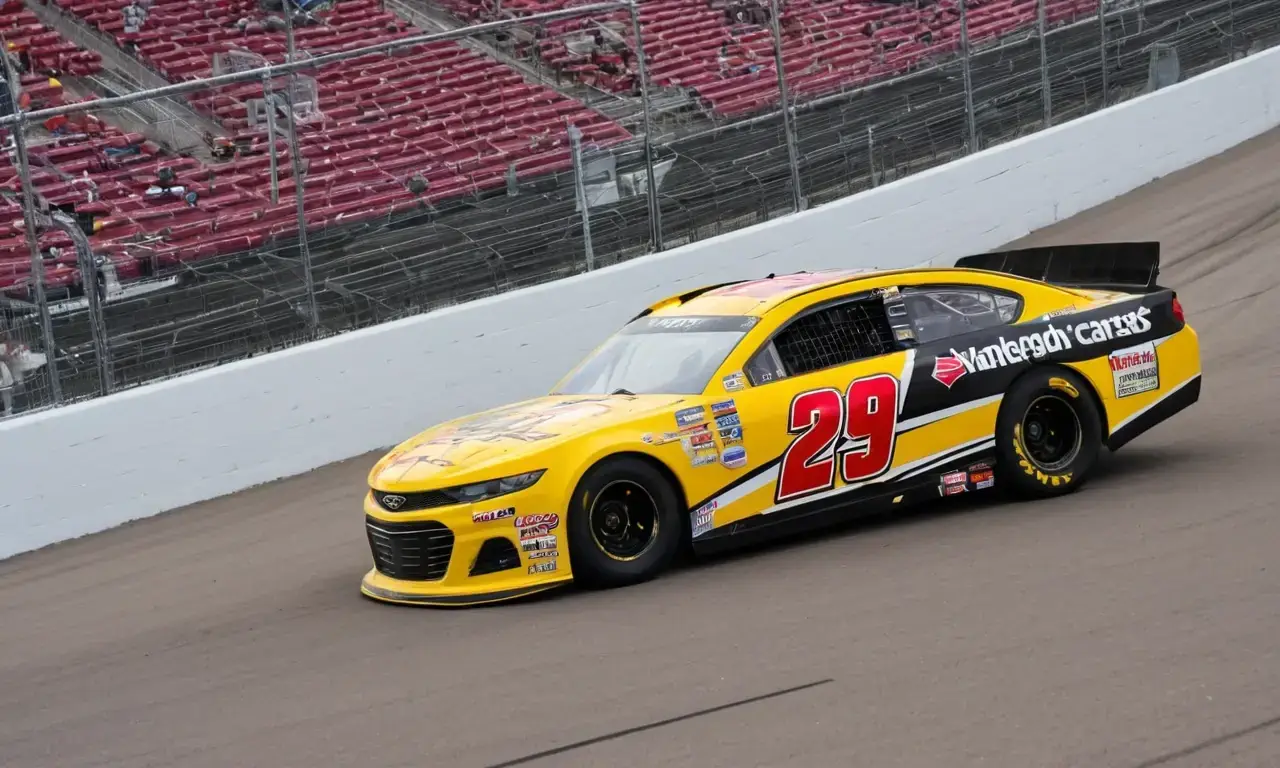
NASCAR Safety: Design & Devices for Driver Protection

NASCAR, short for National Association for Stock Car Auto Racing, is a popular motorsports competition known for its high speeds and thrilling races. However, behind the excitement lies a crucial aspect: driver safety. The sport's inherent risks have led to a continuous evolution of car design and safety measures aimed at protecting drivers during crashes. This article delves into the intricate world of NASCAR safety, exploring how race cars are engineered to minimize harm to drivers while maintaining competitive performance.
The objective is to provide a comprehensive overview of the key elements that contribute to driver protection in NASCAR racing. We will examine the design features of race cars, including their chassis and roll cages, as well as the role of advanced safety technologies. By understanding these aspects, we can appreciate the dedication to driver safety within the sport and its impact on motorsports as a whole.
- Design Features of NASCAR Race Cars
- The Role of the Chassis in Driver Protection
- Importance of the Roll Cage and Seat Design
- Advanced Safety Technologies in Modern Racing
- Impact Absorption and Energy Management
- Driver Safety Regulations and Their Impact
- Future Advancements in NASCAR Safety
- Conclusion
Design Features of NASCAR Race Cars
The foundation of NASCAR's commitment to driver safety lies in the design of their race cars. These vehicles are built with specific features that not only enhance performance but also prioritize the well-being of drivers. The chassis, the car's skeleton, plays a vital role in absorbing impact energy and protecting the occupants during crashes.
The chassis is typically constructed from lightweight materials like aluminum or carbon fiber to reduce weight without compromising structural integrity. This allows for faster speeds and better handling on the track. However, this very lightness also necessitates careful design choices to ensure the car's structure can withstand high-speed impacts.
A key aspect of NASCAR race car design is the use of a roll cage. This intricate framework of interconnected tubes forms a protective cage around the driver's compartment. The roll cage acts as a "crumple zone," designed to absorb and redirect crash forces away from the driver. When subjected to impact, the cage bends and deforms, distributing the energy over a larger area, thereby reducing the force felt by the driver.
The Role of the Chassis in Driver Protection
The chassis is not just a structural component; it also plays a crucial role in protecting drivers during crashes. Its design directly influences how the car responds to impacts. For example, the front and rear clips of a NASCAR race car are specifically engineered to crumple upon impact. This controlled deformation helps absorb energy from collisions, reducing the force transmitted to the driver's seat and minimizing injuries.
Furthermore, the chassis is designed with specific safety features like reinforced side structures and strategically placed crumple zones. These areas are designed to deform under impact, absorbing energy and protecting vital components like the engine and fuel system. This design philosophy ensures that even in a severe crash, the car can still function safely, minimizing damage to the driver's compartment.
Importance of the Roll Cage and Seat Design
The roll cage is arguably one of the most crucial safety devices in NASCAR race cars. It forms a protective barrier around the driver, ensuring their containment during high-speed crashes. The cage is designed with interconnected tubes that form a rigid structure, yet it's also flexible enough to absorb impact energy.
When a car collides, the roll cage deflects and redirects the force away from the driver. This redirection helps prevent ejection or severe injuries by distributing the impact over a larger area. Additionally, the seat is rigidly attached to the roll cage, further enhancing driver safety. This connection ensures that in case of a crash, the driver remains securely within the car's structure, minimizing the risk of being thrown forward or ejected from the vehicle.
Advanced Safety Technologies in Modern Racing

Beyond traditional design features, modern NASCAR race cars incorporate advanced technologies aimed at improving driver safety. These include:
- Advanced Materials: The use of lightweight yet strong materials like carbon fiber and aluminum has significantly reduced the weight of race cars without compromising structural integrity. This allows for faster speeds and better handling while also contributing to improved crash protection.
- Crash Sensors: Modern NASCAR cars are equipped with sensors that detect crashes and automatically activate safety features like the roll cage's deployment mechanism. These sensors help ensure a swift and effective response in case of an accident, further enhancing driver safety.
- Data Analysis: Teams use sophisticated data analysis tools to monitor race car performance and identify potential areas for improvement. This includes analyzing crash data from previous races to understand how drivers can be better protected during future events.
Impact Absorption and Energy Management
The ability of a NASCAR race car to absorb impact energy is crucial for driver safety. The chassis, roll cage, and seat design work together to manage this energy effectively. When a car crashes, the chassis absorbs some of the kinetic energy, while the roll cage redirects it away from the driver's compartment.
This process involves complex engineering calculations that consider factors like crash angles, impact speeds, and material properties. The goal is to create a system that can safely dissipate energy during a collision without compromising the car's structural integrity. This careful design ensures that even in severe crashes, the car can still function safely, minimizing damage to the driver and other components.
Driver Safety Regulations and Their Impact
Driver safety regulations play a vital role in ensuring the well-being of drivers in NASCAR racing. These regulations are enforced by governing bodies like NASCAR and impact every aspect of race car design and operation.
For example, regulations regarding chassis construction, roll cage dimensions, and seatbelt requirements all contribute to driver protection. These regulations ensure that all cars meet a minimum safety standard, minimizing the risk of injuries during races. Additionally, these regulations encourage innovation in safety technology, leading to continuous improvements in how race cars are designed and built.
Future Advancements in NASCAR Safety
The future of NASCAR safety is marked by ongoing research and development efforts aimed at further enhancing driver protection. As technology advances, we can expect to see even more innovative safety features implemented in race cars.
For example, the use of advanced sensors and artificial intelligence (AI) could lead to real-time crash prediction systems that alert drivers and teams about potential hazards. This proactive approach could help prevent accidents before they occur, further reducing the risk of injuries for drivers. Additionally, advancements in lightweight materials and energy management technologies will continue to improve the safety of race cars while maintaining their competitive performance.
Conclusion
NASCAR's commitment to driver safety is evident in its meticulous design choices and continuous efforts to improve safety standards. From the chassis's role in absorbing impact energy to the intricate design of the roll cage and seat, every aspect of a NASCAR race car is carefully engineered to protect drivers during crashes.
The sport's dedication to safety has led to significant advancements in driver protection technologies, including advanced materials, crash sensors, and data analysis tools. These innovations have not only improved driver safety but also contributed to the overall evolution of motorsports as a whole. As technology continues to advance, we can expect even more innovative safety features to be implemented in NASCAR race cars, further enhancing driver well-being and ensuring the sport's continued success for years to come.
Leave a Reply





Related Links